What Provides Fault Tolerance to a Striped Volume Using at Least Three Disks
RAID Levels 0, 1, 5, six and 10 & RAID Types (Software vs. Hardware)
by Brett Daniel, on Apr 22, 2020 iii:53:16 PM
Photo: There are a agglomeration of RAID levels, so many, in fact, that it can be a challenge to distinguish betwixt the differences and benefits of each. In this blog post, we'll discuss a few common RAID levels, highlighting both their differences and benefits. Update 05/05/2020 : Check out our blog post on JBOD vs. RAID to learn more about RAID and how information technology relates to JBOD enclosures. When choosing a RAID level for your storage array, it's important to consider what y'all value most: speed, fault tolerance or both. In this weblog postal service, nosotros'll review five common RAID levels - RAID 0, RAID 1, RAID 5, RAID 6 and RAID 10 - besides every bit how each level stores data. And if yous're interested in a made-in-USA rugged storage system that can utilize these RAID types, don't hesitate to drop usa a line to acquire more near what we can do for you. Nosotros'll also briefly review software RAID vs. hardware RAID, as well equally the history of the RAID engineering science itself. Past the cease, you should exist ready to stone 'n RAID. Table of Contents Photo: A Trenton Systems JBOD/JBOF Rugged Storage unit. The 24 NVME SSDs on this unit of measurement tin can be RAID-configured for amend performance and a higher degree of error tolerance. Redundant Array of Independent Disks (RAID) is a storage technology that creates a data loss fail-rubber by merging ii or more than difficult disk drives (HDDs) or solid-state drives (SSDs) into one cohesive storage unit, or array. RAID storage protects against the total loss of a disk drive's data by repeating or recreating that data and storing it on the additional drive or drives, a process also known equally data redundancy. Full information loss, which may occur in the consequence of a disk bulldoze failure, tin devastate businesses and organizations that crave frequent access to stored information to carry out their daily responsibilities. Graphic: Consequences of disk drive failure in mission-disquisitional applications Total data loss can be particularly devastating for mission-critical applications, whereby a potential failure could event in financial loss, public disapproval, serious injury and even death. Cheers to RAID, mission-critical personnel can go along focusing on executing their essential duties without having to worry nigh the potentially dire ramifications of a deejay drive failure. Simply equally you'll see, not all levels of RAID storage protect against data loss. In fact, at that place's but one that doesn't. Configurations that offering data loss protection are referred to every bit "fault-tolerant." This merely means that the array will go along to function successfully and provide recoverable data in the consequence of a disk bulldoze failure. Graphic: Software RAID vs. Hardware RAID. Hard drive icon made past Surang at Flaticon Implementation and management of RAID storage can be executed via software RAID, whereby a driver on a computer executes RAID processing, or by hardware RAID, whereby a RAID controller card utilizing a motherboard'southward PCI Express slot is used. The effectiveness of software RAID depends on the processing power of the computer. It'due south non ideal for complex RAID configurations. For those high-performance configurations, you'll need a dedicated RAID controller, the sole purpose of which is to execute RAID processing. Boilerplate desktop users can get by with software RAID, since most operating systems, including Apple and Windows, support RAID. Plus, software RAID is the cheaper pick. Bigger, more complex RAID applications, nonetheless, volition demand to go with hardware RAID to achieve the highest possible performance. Graphic: Computer scientists Dave Patterson, Garth Gibson and Randy Katz. The trio is credited with coining the RAID acronym and sparking commercial interest in the engineering. Credit: Calculator History Museum The acronym "RAID" was coined past Academy of California, Berkeley reckoner scientists David Patterson, Garth Gibson and Randy Katz in their enquiry paper, "A Case for RAID," presented at the 1988 annual conference of the Association for Computing Mechanism's Special Involvement Group on Management of Data (SIGMOD). RAID originally stood for "Redundant Array of Inexpensive Disks" due to the expense cistron of Patterson, Gibson and Katz'south newspaper. The trio argued that one array of multiple inexpensive disks could technically outperform their larger, more expensive counterpart: the mainframe disk bulldoze. Although the concept of combining disk drives to amend performance wasn't a new one, the trio's newspaper sparked commercial involvement in RAID. Several RAID levels have since been standardized by the Storage Networking Industry Association (SNIA). Configurations are typically evaluated based on their level of fault tolerance, their read and write speeds and their storage capacity. There are many RAID levels in use today, several of which are rare. The near common RAID configurations are RAID 0, RAID 1, RAID 5, RAID 6 and RAID x. Graphic: RAID 0 configuration RAID 0, the simplest RAID storage blueprint, utilizes data striping, a process that separates files into segments for storage. The data segments are stored on one disk bulldoze, every bit well as the other disk drives in the assortment. A RAID 0 setup increases a disk drive'south read and write speeds, given that the additional drives contribute meantime to the assortment's overall read/write workload. For example, if yous're storing a 1GB file in a two-deejay RAID 0 configuration, that 1GB file is separated into two 500MB segments before beingness written onto each disk, cutting write time in half. Read time is also cut in half, since retrieving the ii 500MB data chunks from two disks takes less time than retrieving the unabridged 1GB file from 1 deejay. So, essentially, the more disks in the RAID 0 array, the faster the read and write speeds. At present, why might you want to employ a RAID 0 disk configuration? RAID 0 is not bad for storage applications that require swift read and write speeds and have a relatively depression risk of total data loss. It's perfect for PC gamers, who mostly prefer shorter save and load times, as well as photographers, videographers and music producers, who frequently salvage and load large files using editing software. Unfortunately, RAID 0 lacks data redundancy, ergo, it is not a fault-tolerant array. If ane of the disk drives in the assortment fails, all the data is lost. In other words, RAID 0 should be avoided like the plague in mission-critical applications, where a total loss of information could take catastrophic consequences. An added plus, nevertheless, is that RAID 0 users tin employ the entire capacity of the disk drives. So, if you're using 4 1TB disk drives in your RAID 0 array, y'all have access to iv TB of infinite. This is not the example in the other mutual RAID configurations, where duplicate data chunks are created to improve fault tolerance, and equally a result, take up more space. Graphic: RAID 1 configuration RAID ane utilizes disk mirroring, which creates copies of the same file for storage. In RAID 1, the original file is stored on i deejay drive, and identical copies of the file are stored on the other disk drives in the array. As a issue, RAID 1 produces disk drives that are mirrored copies of each other. Unlike RAID 0, RAID 1 provides data redundancy, creating a fault-tolerant array. And so, in a two-disk RAID 1 configuration, if one disk drive fails, the 2nd disk drive contains the aforementioned data, ergo, information was not lost and can be easily recovered. As a result, fault tolerance has been achieved. Similarly, in a 5-deejay RAID 1 configuration, if three disk drives neglect, the fourth and fifth deejay provide users with two complete backups of the aforementioned data. The more disk drives in the array, the more than copies of the files that are created, and in plough, the greater the degree of error tolerance. RAID 1 is useful for mission-critical applications, where total loss of vital, sensitive or classified information is unacceptable. Doc's offices, accounting firms, law firms, banks, police departments, wellness departments and other government offices could all do good from a RAID i storage configuration. Simply even average, everyday users can benefit from RAID ane's data cloning abilities. The gamers, the photographers, the videographers and the music producers, each of whom would undoubtedly benefit from the increased read and write speeds of RAID 0, would arguably be improve off sacrificing the speed of RAID 0 for the data back-up and error tolerance of RAID ane. When deciding betwixt RAID 0 and RAID 1, the RAID one users tin can accept comfort in knowing that, in the result of a disk drive failure, their files have been safely duplicated. RAID ane data has non been segmented, so if a disk drive failure occurs, the data do not have to be pieced back together from the failed disk and are therefore recoverable. RAID 1 should not replace regular backups, nonetheless. Another downside of the classic ii-deejay RAID 1 configuration is that its storage capacity is only half of its total deejay bulldoze chapters. And then, if you're using two 2TB disk drives, for a full of 4TB of storage capacity, yous're technically being allotted 2TB of infinite considering the 2nd bulldoze contains the same information as the first. At present, if you lot add a 2TB disk bulldoze to that same RAID ane array, you're however only beingness allotted 2TB of infinite, because now, the other ii 2TB disk drives contain the same data as the first. And in a 4-disk RAID 1 array with, for example, ii 2TB disk drives and 2 4TB deejay drives, for a total of 12 TB of storage capacity, you're still only being allotted 2TB of space. Why? Because if you're saving 2TB of data to the array, the 2TB drive is filled with the original data, the 2nd 2TB is filled with copies of that data, and the two 4TB drives have been filled with copies at only one-half of the drives' usable storage chapters. And then, in this setup, you'd have 6TB beingness used for data protection and 4TB of unused infinite. Compare each of these scenarios to a RAID 0 configuration, in which the array's storage capacity would be equivalent to the total disk drive capacity. The trade-off for RAID 0 is mistake tolerance, and the merchandise-off for RAID 1 is speed and efficiency. This RAID stuff can go rather complex, huh? Well, you lot haven't seen annihilation still! Be sure to bank check out Synology's RAID storage calculator to exam out dissimilar RAID arrays and storage combinations. Graphic: RAID 5 configuration RAID v is mayhap the most common RAID configuration, and different RAID 0 and RAID ane, requires a minimum of three disk drives to function. RAID 5 utilizes data striping, whereby data are separated into segments and stored onto the separate disk drives in the array. Simply RAID 5 likewise utilizes a procedure called parity, whereby a checksum of all the data is created and stored onto each of the drives in the array also. So, in a four-deejay RAID 5 array, the data and their parity checksums would exist striped and distributed onto all 4 drives for safekeeping. And in the event of a disk bulldoze failure, the parity checksums allow for the recreation of the stored data. The downside to RAID 5 is that it can simply withstand ane disk drive failure. Thankfully, RAID 5 is hot-swappable, significant one disk bulldoze can be replaced while the others in the assortment remain fully functional. Unfortunately, if a 2d deejay drive fails while the information from the get-go is beingness recreated, then all the information in the assortment are lost. In terms of storage capacity, since the space of 1 disk drive is required to shop the parity checksums, total array storage chapters in RAID 5 configurations is reduced by i whole drive. For example, in a 5-deejay RAID five configuration with v 1TB disk drives, for a total of 5TB of storage capacity, only 4TB can exist utilized since the parity checksums accept upwardly the space of i whole disk drive. Similarly, in an eight-disk RAID 5 configuration with viii 2TB disk drives, for a total 16TB of storage capacity, but 14TB tin be utilized. RAID v outshines RAID 0 and RAID one in terms of error tolerance and has higher total storage capacity than a RAID i array. Similar RAID 0, RAID 5 read speeds are fast due the concurrent output contribution of each drive, only dissimilar RAID 0, the write speeds of RAID 5 endure due to the redundant creation of the parity checksums. RAID 5 and RAID six are not so different. They both utilize the data striping and parity processes. The main differences between the two configurations are that RAID 6 requires four drives to role, and it utilizes double parity, whereby two checksums are created instead of one. In RAID 6, 2 disk drives tin can fail without full information loss occurring. This means meliorate security than RAID 5, but it also means even slower write speeds since one additional checksum must be created. Graphic: RAID ten configuration RAID 10 utilizes both information striping and deejay mirroring to attain data redundancy and thus a high degree of fault tolerance. RAID x is sometimes referred to as "RAID 1+0," since information technology combines the mirroring and striping processes found in the RAID 1 and RAID 0 configurations, respectively. In a RAID x configuration, which requires a minimum of four disks, data is segmented before being duplicated onto the drives in the assortment. Like in RAID 0, where a file is segmented and stored onto two separate disk drives in a 2-disk configuration, in RAID ten, each of those file segments are mirrored, requiring additional storage space. A standard iv-disk RAID 10 setup can but withstand ane drive failure in each mirrored pair of deejay drives. Otherwise, total data loss occurs. And as with the standard 2-disk RAID one configuration, total storage capacity of RAID 10 is halved. So, six 1TB disk drives will only internet you 3TB of usable space. Indeed, RAID 10 is the all-time of both RAID 0 and RAID 1, boasting fast read and write speeds and incredible error tolerance. The best RAID configuration for your storage system will depend on whether you value speed, information redundancy or both. If y'all value speed most of all, choose RAID 0. If you value information redundancy most of all, recall that the following bulldoze configurations are fault-tolerant: RAID 1, RAID 5, RAID 6 and RAID 10. Determine your RAID goals past reviewing the following scenarios: Q: Are you a large business or organization with multiple servers and numerous employees who need consistent access to the information stored on those servers? A: Cull RAID five, RAID 6 or RAID ten, and go with a hardware RAID controller. Q: Are you a pocket-sized concern or organization where speed isn't as much of a priority as proper record-keeping? A: Cull RAID 1 or RAID five, and choose your operating system's software RAID driver. Q: Are you lot a mission-disquisitional business or organisation where a loss of sensitive, classified or other vitally important data could result in headache, fiscal ruin, serious injury or even death? A: Choose RAID 6 or RAID ten, and cull a hardware RAID controller. Q: Are you lot a gamer, lensman, videographer, music producer or other user who values speed and efficiency over fault tolerance? A: Choose RAID 0 with your operating organisation's software RAID driver. But be sure to carry regular backups. We hope this blog post helped clear up the differences between mutual RAID levels and how each of them can offer a unique benefit to your program or application. Trenton Systems articles customizable rugged storage systems that can use RAID engineering. These systems include our JBOF/JBOD and 5U Rugged Storage systems. Not but do nosotros offering RAID-capable rugged storage systems, simply nosotros design, industry, assemble, integrate and back up these systems right here in the Us. That's right. We do information technology all in one U.s. facility to provide yous with high-quality rugged computing solutions, cutting downward on potential security hazards, support the American economy and American jobs, and offering super fast, in-house customer service and support. Trenton Systems creates rugged computer systems to help customers around the world see their rugged computing needs. We stress-exam our computer systems to the max, ensuring that customers tin carry out manufacture-specific operations comfortably, effectively and smack dab in the centre of the earth's harshest weather. In other words, we stress and so you lot don't have to. 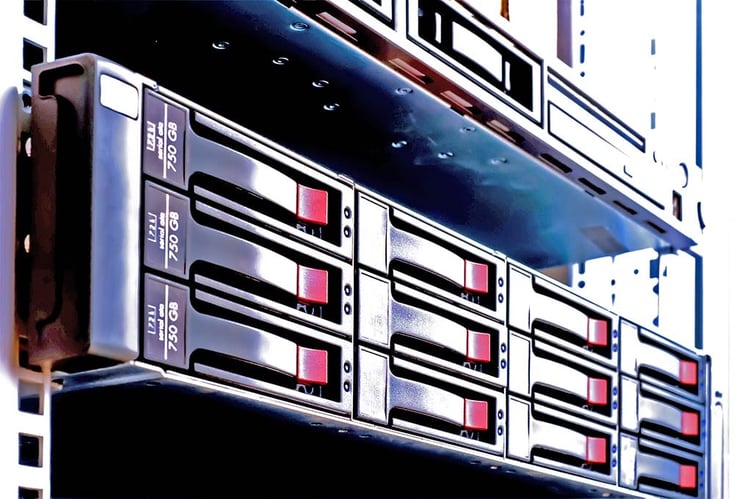

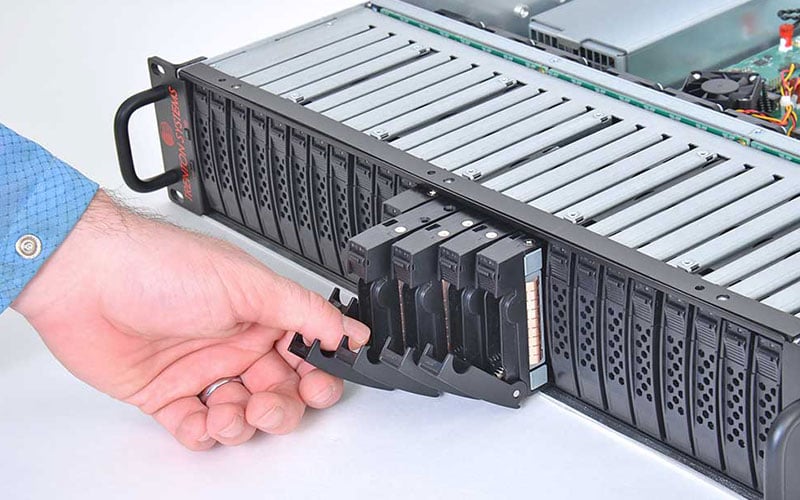
What is RAID storage?

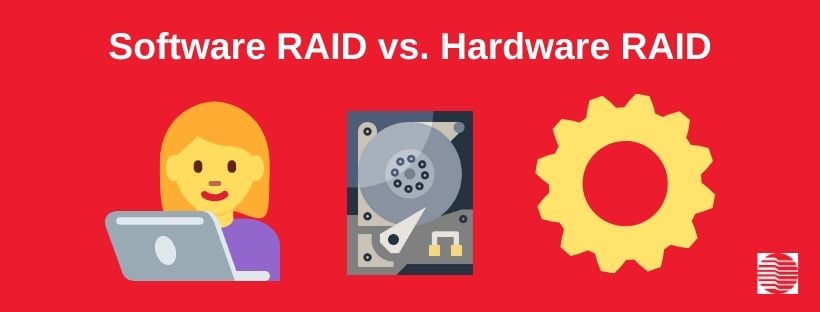
RAID Types: Software RAID vs. Hardware RAID
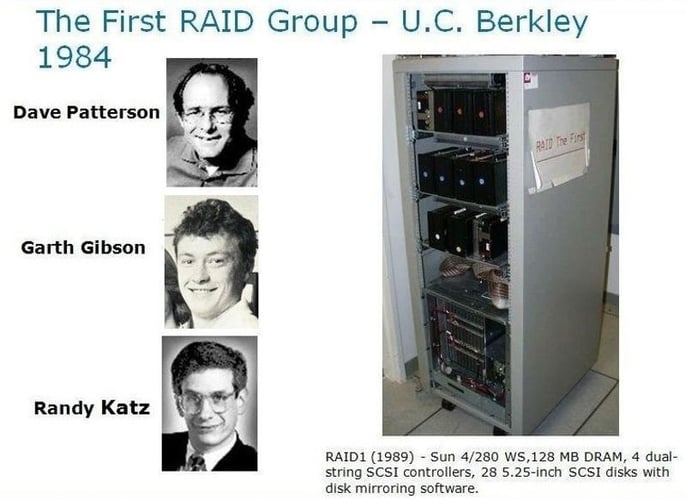
History of RAID
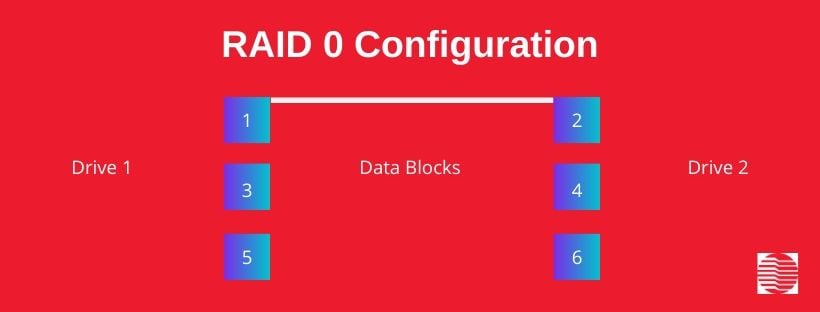
What is RAID 0?
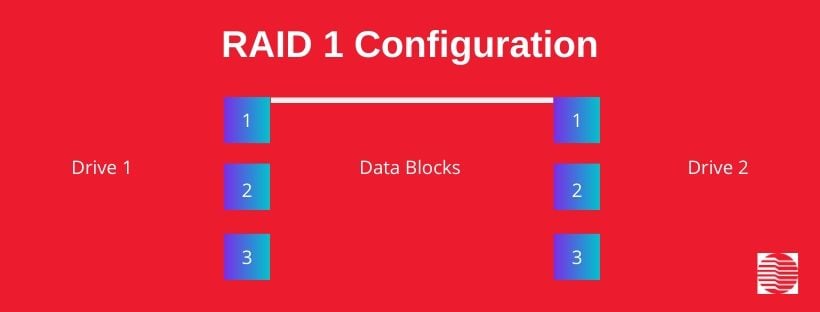
What is RAID i?
RAID 0 vs. RAID i

What is RAID v?
RAID 5 v. RAID 6
.jpg?width=1314&name=Copy%20of%20Copy%20of%20Copy%20of%20Copy%20of%20Announcement%20(1).jpg)
What is RAID 10?
RAID Configurations: Processes and Fault Tolerance Raid Level Raid 0 Raid ane Raid 5 Raid 6 Raid 10 Process Information Striping Disk Mirroring Striping + Parity Striping + Double Parity Mirroring + Striping Tolerance Non Mistake-Tolerant Mistake-Tolerant Error-Tolerant Error-Tolerant Fault-Tolerant
Which RAID is best? Conclusion

Source: https://www.trentonsystems.com/blog/raid-levels-0-1-5-6-10-raid-types
0 Response to "What Provides Fault Tolerance to a Striped Volume Using at Least Three Disks"
Post a Comment